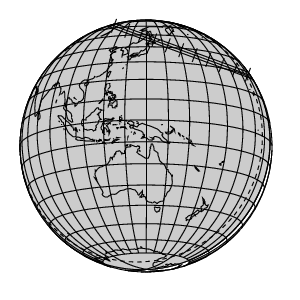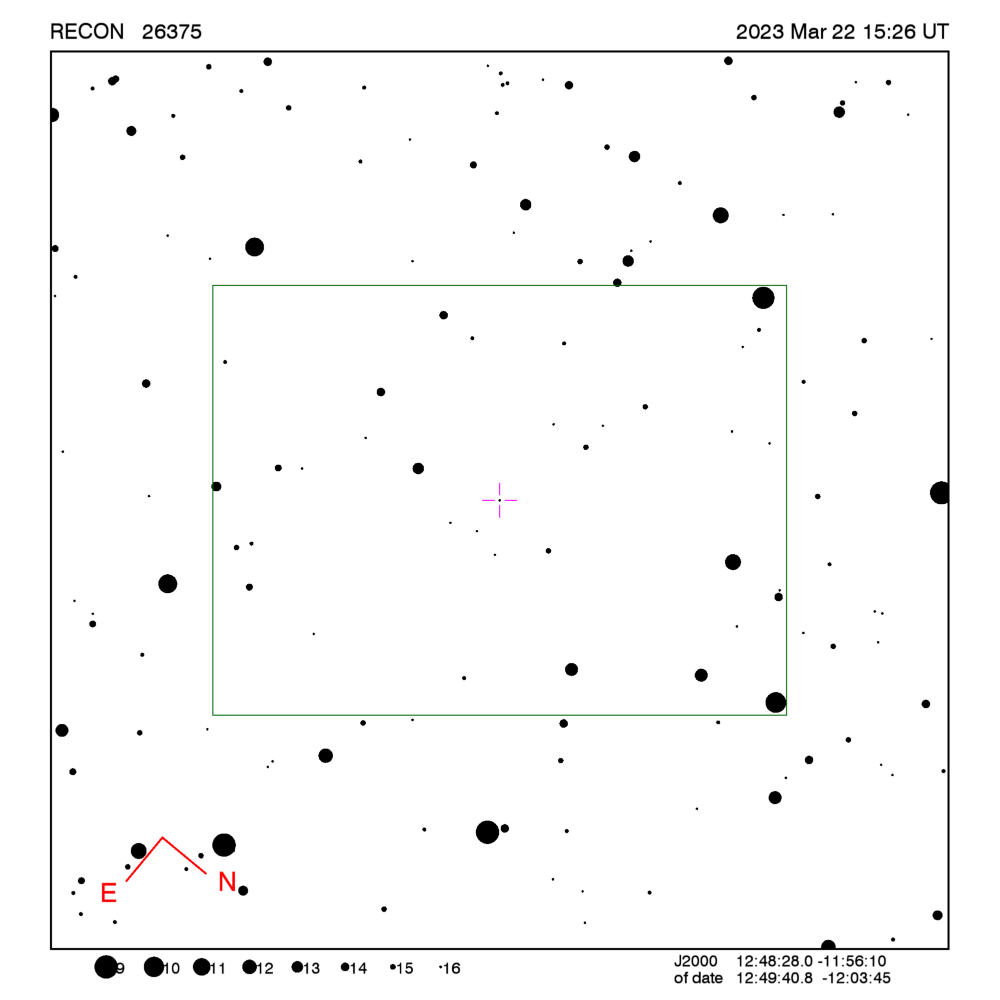RECON: TNO occultation with 26375
Event between (26375) 99DE9 and star GA0780:04287396
with event index number of 1212867
Geocentric closest approach at 2023/03/22 15:30:00 UTC
J2000 position of star is 12:48:28.0 -11:56:10
Equinox of date position of star is 12:49:39.3 -12:03:35
Stellar brightness G=16.3,
use SENSEUP=128 with the MallinCam and and exposure
time of 2 seconds with the QHY174 camera.
Star is 172 degrees from the moon.
Moon is 1% illuminated.
TNO apparent brightness V=21.0
 TNO is 40.8 AU from the Sun
and 39.9 AU from the Earth.
TNO is 40.8 AU from the Sun
and 39.9 AU from the Earth.
The TNO is moving 24.0
km/sec on the sky relative to the star, or,
3.0 arcsec/hr.
The 1-sigma error in the time of the event is 71 seconds.
The 1-sigma cross-track error in the shadow position is
1573 km.
The TNO has an absolute magnitude Hv=4.9
Diameter=619.5 km assuming a 5% albedo -- 25.9 sec chord
Diameter=252.9 km assuming a 30% albedo -- 10.6 sec chord
Dynamical classification is 5:2EEE
Star training set for 26375, (2023/03/22 15:30UT)
Object RA Dec mag sep mel
Spica 13:26:25.2 -11:16:54 1.0 9.03 170
PPM 226198 12:42:28.4 -13:08:28 6.0 2.06 170
PPM 226343 12:48:30.8 -12:24:20 7.6 0.45 171
PPM 226385 12:50:12.8 -11:57:45 9.4 0.16 172
26375 12:49:40.8 -12:03:45 16.3 172
Positions are for equinox of date

Azimuth is measured in degrees eastward from north.
North is at an azimuth of 0, due East is at an azimuth
of 90 degrees, due South is 180, and due West is 270.
Do not use the listing below for the RECON CPC 1100 telescopes.
This is provided for other non-team facilities.
Star training set for 26375, (2023/03/22 15:30UT)
Object RA Dec mag sep mel
Spica 13:25:11.5 -11:09:41 1.0 9.03 170
PPM 226198 12:41:15.7 -13:00:51 6.0 2.06 170
PPM 226343 12:47:18.0 -12:16:44 7.6 0.45 171
PPM 226385 12:49:00.0 -11:50:10 9.4 0.16 172
26375 12:48:28.0 -11:56:10 16.3 172
Positions are for J2000
Event circumstances last updated at 2022/09/29 04:14:36 UT
Marc W. Buie,
Southwest Research Institute
RECON
 TNO is 40.8 AU from the Sun
and 39.9 AU from the Earth.
TNO is 40.8 AU from the Sun
and 39.9 AU from the Earth.
